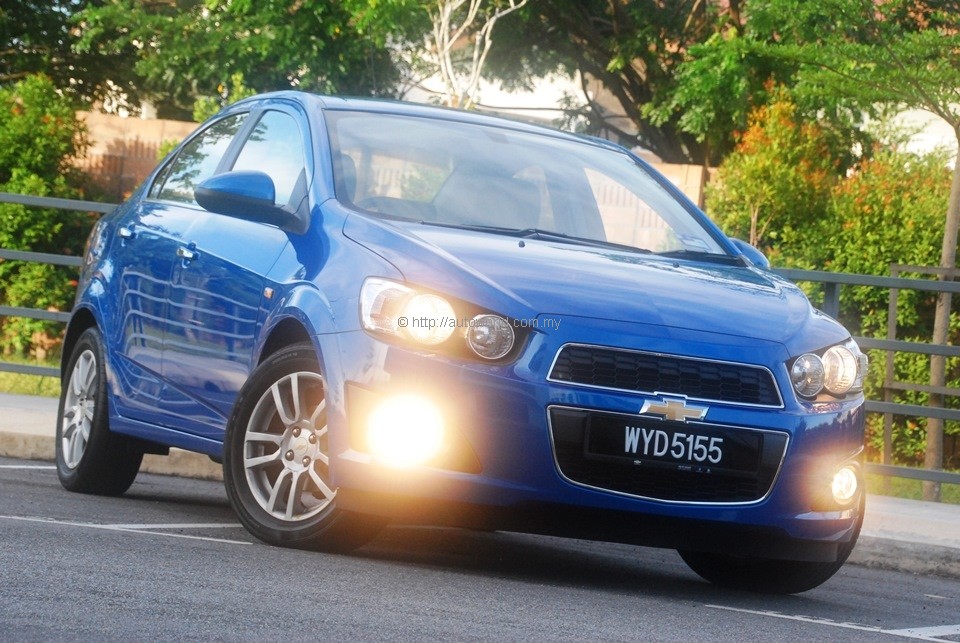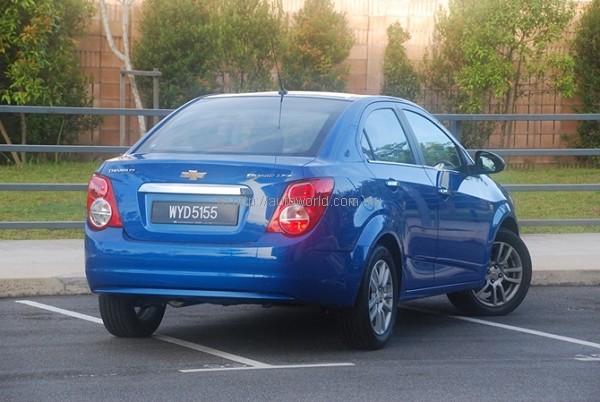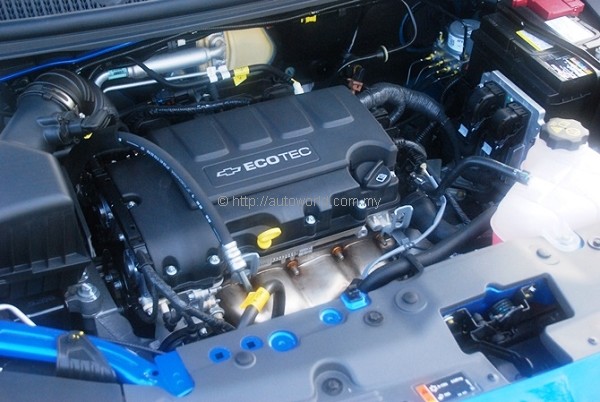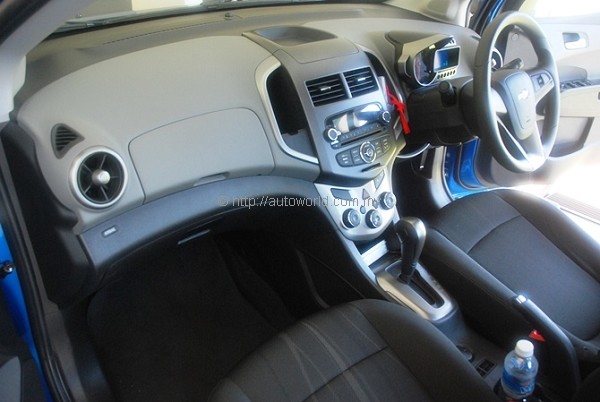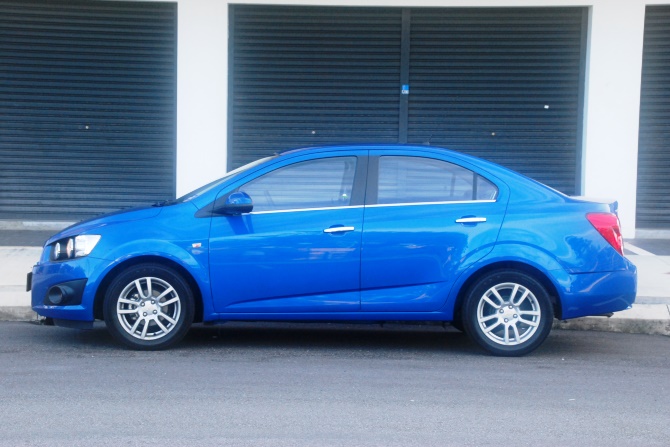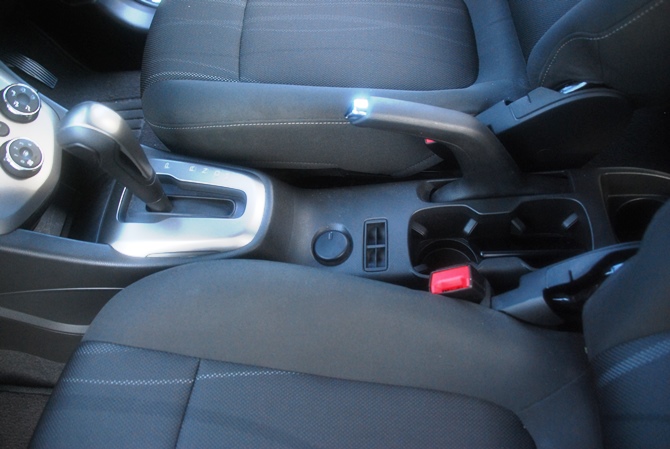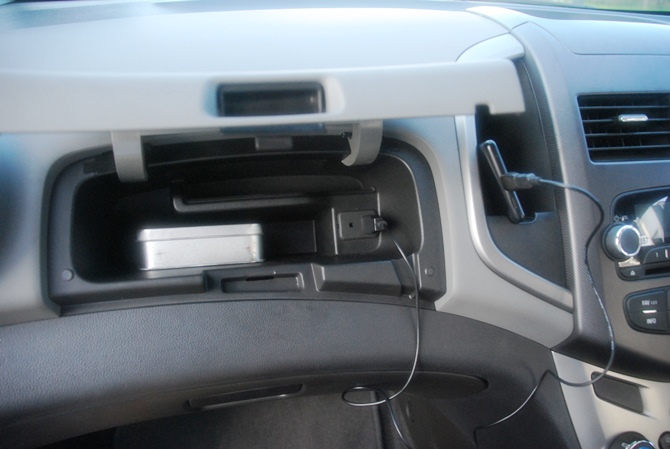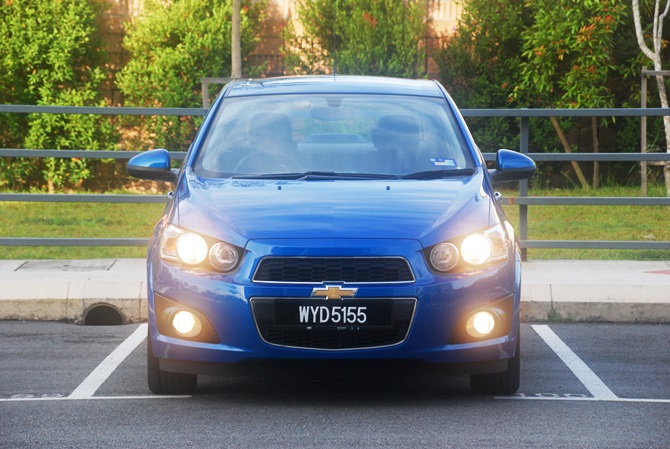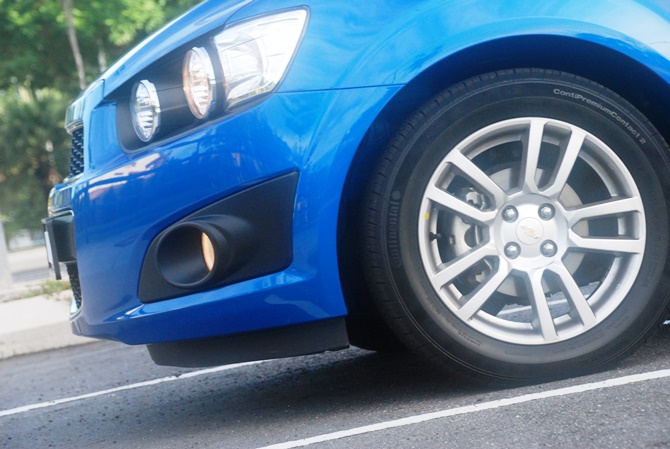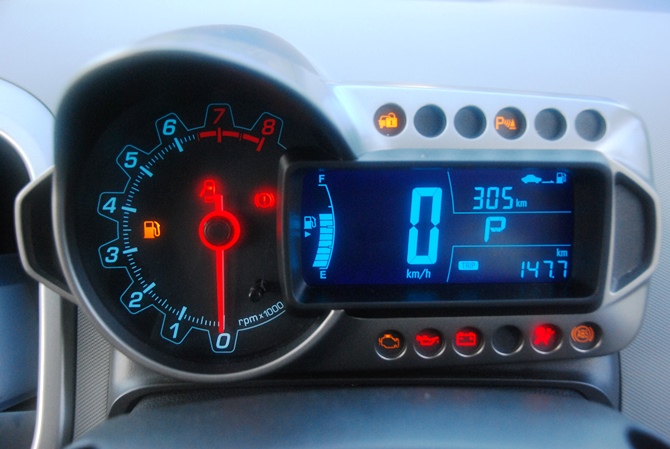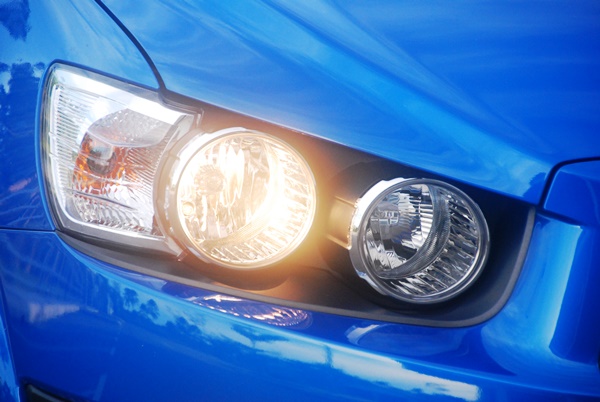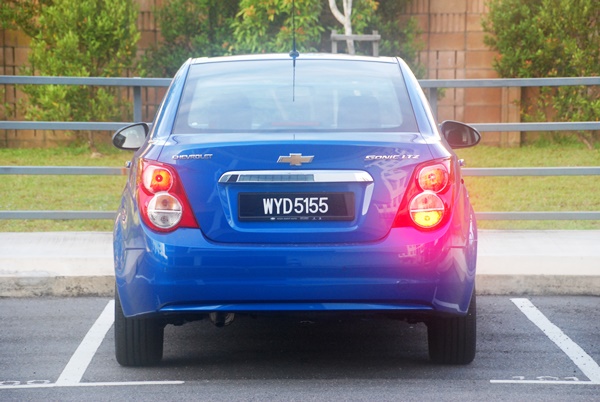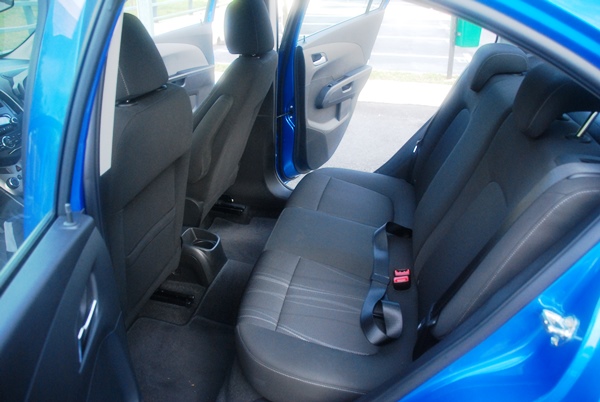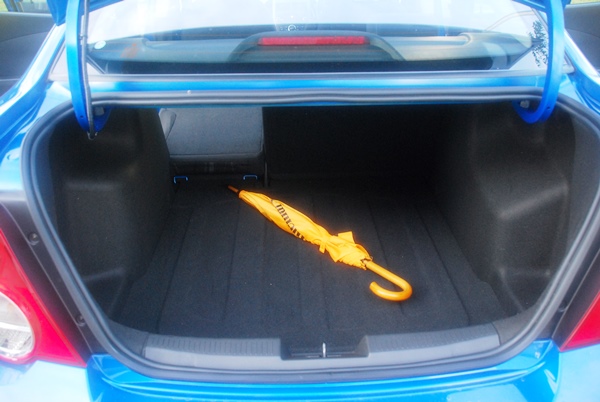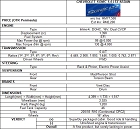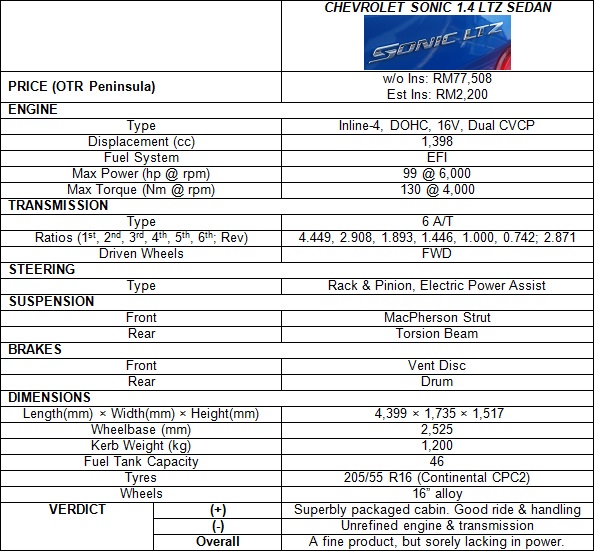Chevrolet Sonic 1.4 LTZ Test Drive Review
We saw the Chevrolet Sonic’s arrival for a long time coming. The car made its world debut at the Paris Motor Show in 2010 as the Aveo, and then only as a hatchback. The Aveo, you would recall, was actually the name given to Chevrolet’s previous B-segment model, which after an encouraging start, suffered flagging sales for the majority of its model life-cycle here in Malaysia.
The ASEAN version of the Sonic was previewed to us at last year’s Bangkok Motor Show, and we finally welcomed it to our shores at the end of 2012. Carrying a new name and catchy new styling, can the Sonic deliver Chevrolet’s much needed push in the B-segment that the Aveo failed to muster before this?
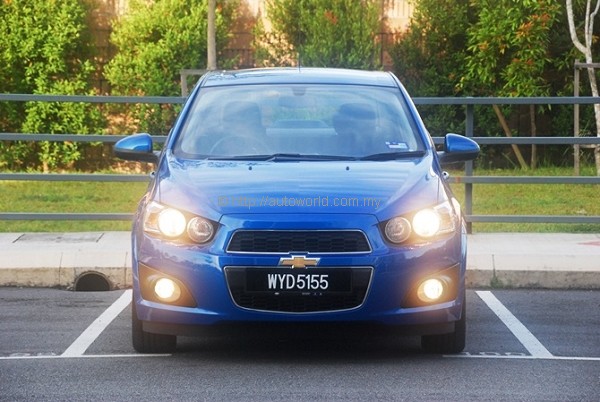 |
| Sonic’s front end styling is among the fiercest-looking in the segment. |
Prices & Variants
Chevrolet offers only one trim level for the Sonic, the 1.4 LTZ featuring a 6-speed automatic transmission. There are, however, two body styles to choose from with the four-door sedan as tested here priced at RM77,508 on-the-road without insurance, followed by a five-door hatchback priced RM2,000 further upwards.
Both versions are identically equipped, which means the hatch’s premium cannot be justified by empirical considerations. The sedan is clearly the value pick on paper, even if that RM2,000 difference can be effectively negated over a typical financing tenure lasting seven to nine years.
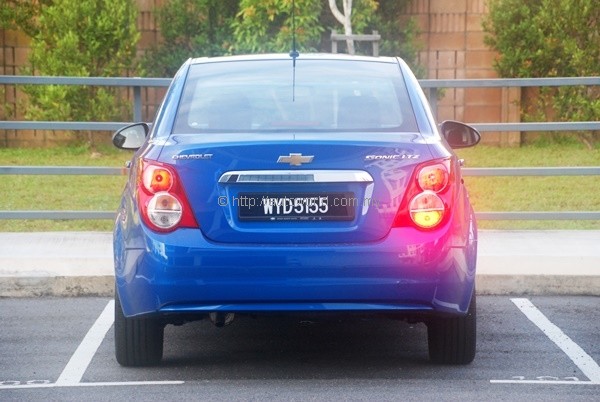 |
Specifications
Typical of the segment, the Sonic is powered by a naturally-aspirated four-cylinder engine enhanced with variable valve timing technology. Displacing 1,398cc, the GM Ecotec engine’s outputs of 100hp and 130Nm trumps the 1.4-litre powerplants from Ford and Suzuki, but falls notably short of the 1.5 to 1.6-litre mills powering the majority of cars in the segment.
GM’s global B-segment Gamma-II platform underpins the Sonic, providing it with a suspension layout that features independent MacPherson struts up front and a torsion beam at the rear. Chevrolet claims that the Sonic’s Body Frame Integral (BFI) structure uses 60% high-strength steel to deliver high stiffness levels, but engineers evidently neglected to work on weight reduction – our sedan test car was quoted with a kerb weight of 1,200kg, which is heavier than even the Hyundai Elantra 1.6, say nothing about its feather light B-segment rivals.
 |
| Hatchback to sedan conversions typically produce awkward proportions. The Sonic is pretty decent. |
Exterior
Despite being designed with the hatchback variant as its starting point, the Cruze sedan we tested was not exactly awkward-looking; you would hardly consider this to be a hatchback with a grafted-on boot when viewed from the side. Frontal views present the Sonic with a squat stance, which does not fully gel with the rear’s upright proportions, emphasized by its vertically-stretched tail light cluster.
There were a number of occasions whilst driving the Sonic for this review that I was stunned by the kind of heart-stopping sound of a front spoiler scratching the ground whilst negotiating bumps. Inspecting the damage, I realized that it was not a front lip hitting the ground (the Sonic doesn’t have one to start with), but an undercarriage shield panel that extends below the front overhang areas. Approach angles are typically 4×4-relevant questions, but in the Sonic’s case, it is definitely compromised. Slow down at bumps.
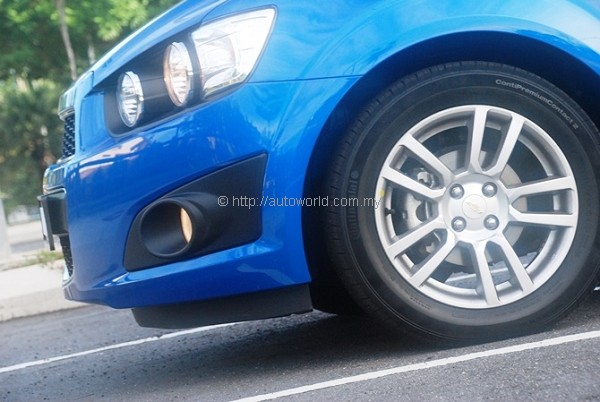 |
| When you go over bumps, that plastic shield underneath is very susceptible to scratching the ground. |
Interior
Packaging of the Sonic’s interior is top notch – rear leg room is decent and boot space is impressive, given that a full-sized spare tyre resides under the boot floor. The sedan’s boot space of 466 litres is bigger, in fact, than even the Cruze, and if you need even more space, the rear seat backs can be folded in a 60:40 split.
In-cabin storage spaces are just as well-conceived; although the centre console of a Honda Jazz will swallow small items more effectively, you won’t have problems finding spaces to deposit your handphones, keys, and the odd cuppa thrown in. The two cubby holes flanking the air-con blowers were deep enough to swallow an entire walkie-talkie each, and Chevrolet also thoughtfully lined all small-item storage spaces with rubber surfaces.
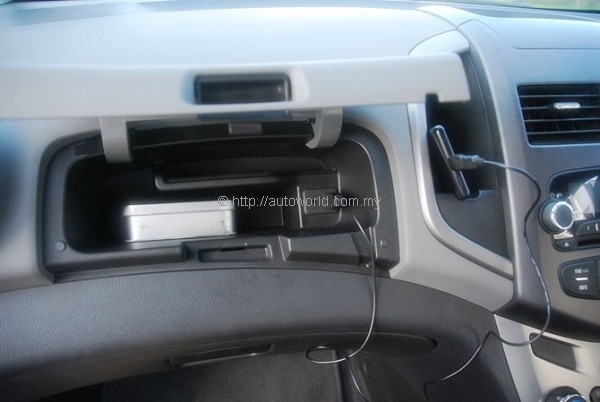 |
| That little groove runs at the bottom of the storage compartment is for wires. Thoughtful! |
The built-in audio system features Bluetooth and USB connectivity, the latter facilitated by a port placed inside the upper glovebox. What really caught this writer’s attention was an inconspicuous-looking little groove at the edge of the compartment that allows your wire to run through whilst the lid is closed. A very thoughtful little touch, and the parking card slot just below the audio head unit was just as appreciated.
Instruments and controls are similarly faultless. The ‘motorcycle-inspired’ meter cluster may seem like an exercise in vanity, but it does present information clearly, and switchgear are all logically placed – easy and intuitive to operate. The Sonic’s cabin is evidently put together by a team of designers who know a thing or two about ergonomics and user-friendliness. Material selection, however, is not inspiring with hard plastics abound even if they felt well put together.
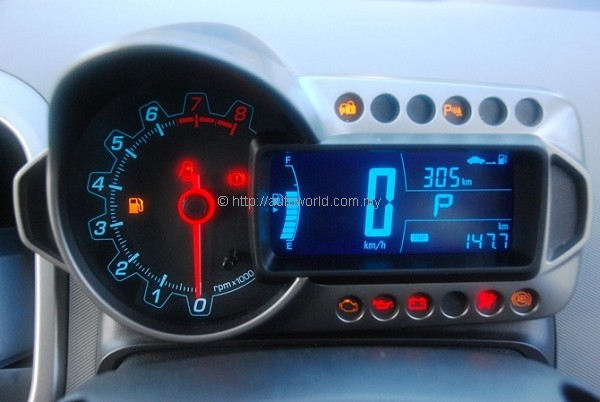 |
| Instrument panel is motorcycle inspired, apparently. |
Driving Experience
The Sonic’s poor power-to-weight ratio is obvious from the moment you take off from standstill and you are reminded of it every time you try to mash the accelerator pedal. The engine quite obviously struggles with the vehicle’s weight and not helping matters is a hesitant and unintuitive automatic transmission. It is nice to say you have six gears on paper, but I can think of a few four-speeders that work more effectively.
The transmission is slow in its gear changes – you even get roll back on slopes, a harmless but amusing trait – and the use of the unintuitive rocker switch to operate its manual gear change feature further adds to the frustration. It is the only blot to an otherwise faultless control layout, and having also seen this feature in two recent Ford vehicles, this is not a trend which I hope to see take off.
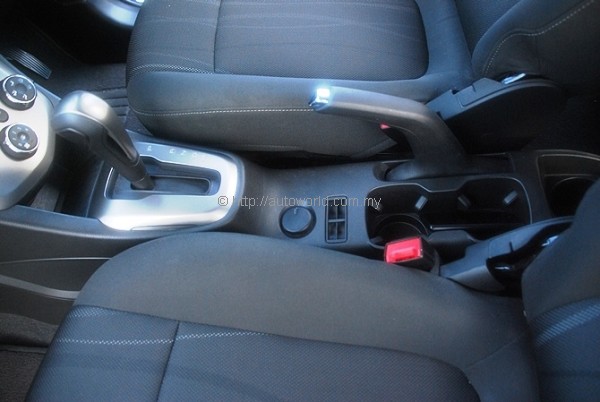 |
| Three cupholders along the centre console provide are useful. 6 A/T, however, is hesitant and slow. |
Whilst the engine-transmission combo was uninspiring, the opposite is true for the Sonic’s ride and handling, which we would describe as being superbly calibrated. Body movements at corners are well controlled with measured levels of roll, but ride quality is excellent, the suspension pliantly absorbing bumps, especially impressive given the fact that our test car wears 16-inch rims.
Sound insulation is just as praiseworthy, and this is an area where Chevrolet vehicles typically shine. While you will have to forgive the ruckus being stirred up by the engine up front, cruise along at part throttle and you will realize just how well isolated you are from wind and tyre noises.
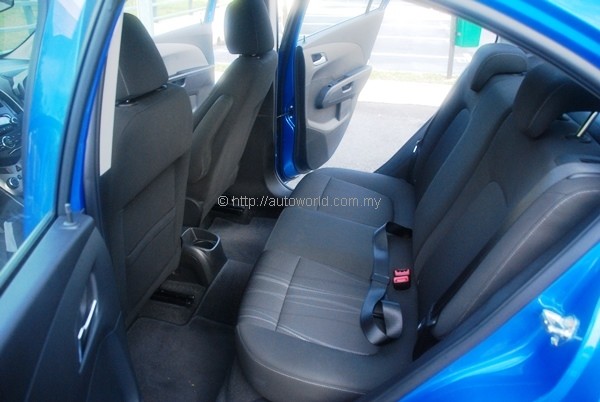 |
| Rear leg room won’t trouble the Nissan Almera, but it is still decent. |
Verdict
Amongst its rivals in the B-segment, the Sonic stands out as an unconventional-looking choice with styling that is bold and unique. It is also one of few vehicles that completed the hatch-to-sedan transition without ending up with awkward proportions – the Ford Fiesta / Mazda2 sedans and Nissan Almera come to mind here. It is also a well-packaged vehicle in terms of overall space, as evidenced by its excellent (but not class-leading) boot capacity and rear passenger room.
What the Sonic really needs in order to become a genuine force in the segment is a better engine and transmission combo to better exploit the decent talents of its well-balanced chassis. A bigger engine that does not need to be worked as hard as this Ecotec unit will also go a long way to improve its refinement and also better highlight the Sonic’s excellent sound insulation package. It’s a decent car, the Sonic, but without the speed of that blue cartoon hedgehog.
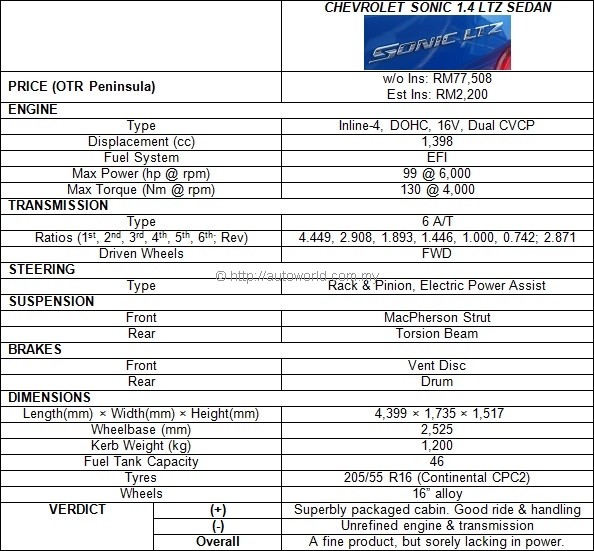 |




